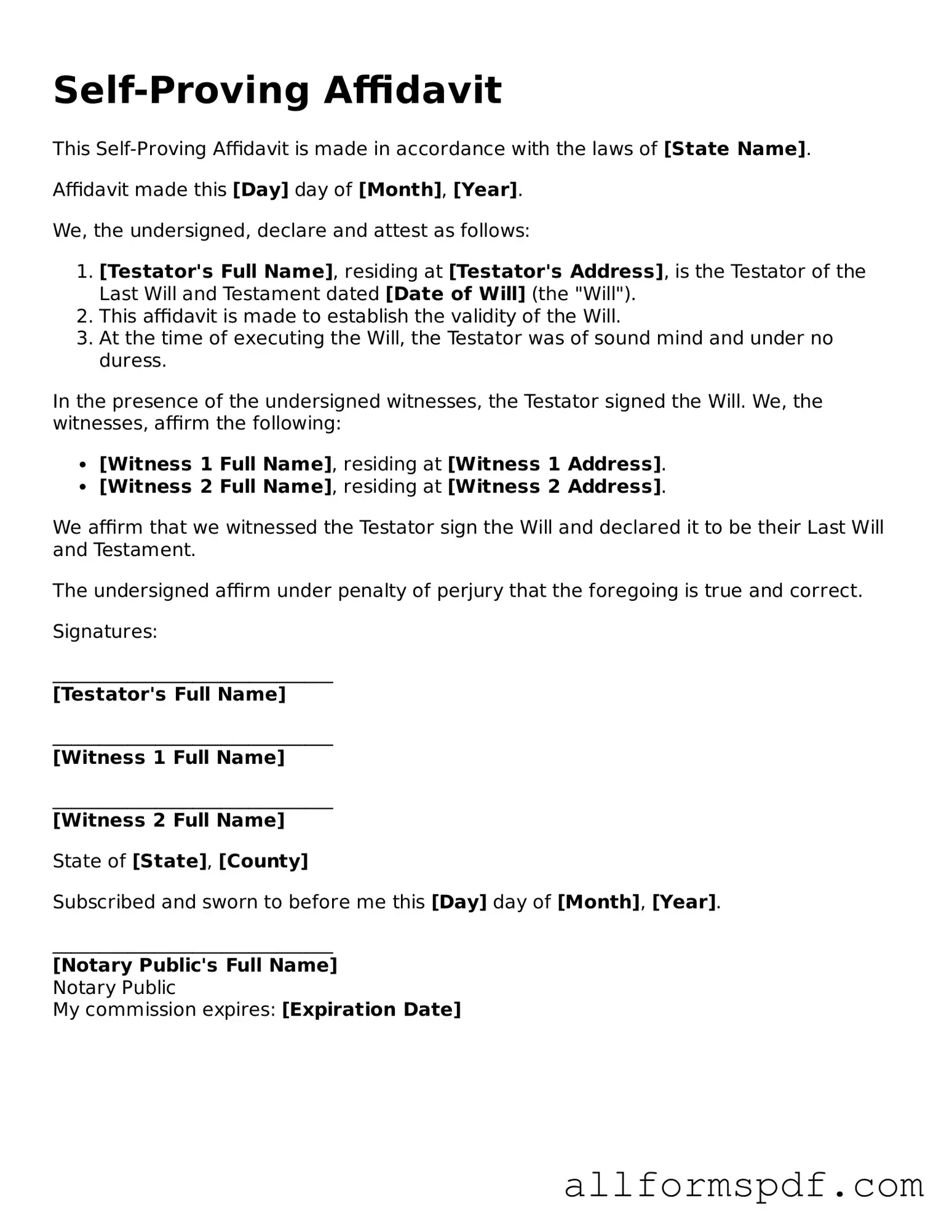Filling out a Self-Proving Affidavit can be a straightforward process, but many individuals make common mistakes that can lead to complications. One frequent error is failing to include all necessary signatures. The affidavit requires the signatures of the testator and witnesses. If any signature is missing, the affidavit may not be valid.
Another mistake involves not providing accurate information. People sometimes rush through the form and overlook details like the date or the names of the witnesses. Inaccurate information can create confusion and may lead to legal disputes later on.
Many individuals also neglect to have the affidavit notarized. A Self-Proving Affidavit must be notarized to be considered valid. Without notarization, the document may not hold up in court, undermining its intended purpose.
Additionally, some people fail to understand the importance of the affidavit's language. The wording must clearly state that the testator was of sound mind and not under duress when signing the will. Ambiguous language can lead to challenges regarding the will's validity.
Another common error is not keeping the affidavit with the will. It is essential to store the Self-Proving Affidavit alongside the will to ensure that it is easily accessible when needed. If the affidavit is misplaced, it may not be used effectively during probate.
People often forget to review the completed affidavit for clarity and completeness. A rushed review can lead to overlooked errors, which may complicate matters later. Taking the time to double-check the document can save significant trouble down the line.
Lastly, individuals sometimes assume that the Self-Proving Affidavit is optional. In reality, while it is not required, it can greatly simplify the probate process. Many people miss out on the benefits of this affidavit by not recognizing its value.
